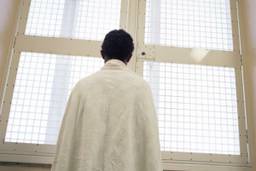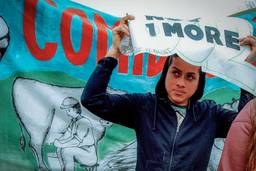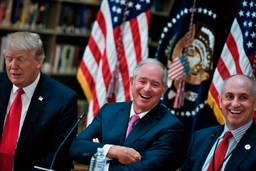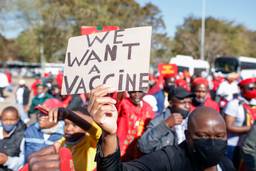Wisconsin’s Incarcerated Wait for Vaccines
Incarcerated people and their advocates criticize state agencies for lag in administering vaccines.
Arvind Dilawar
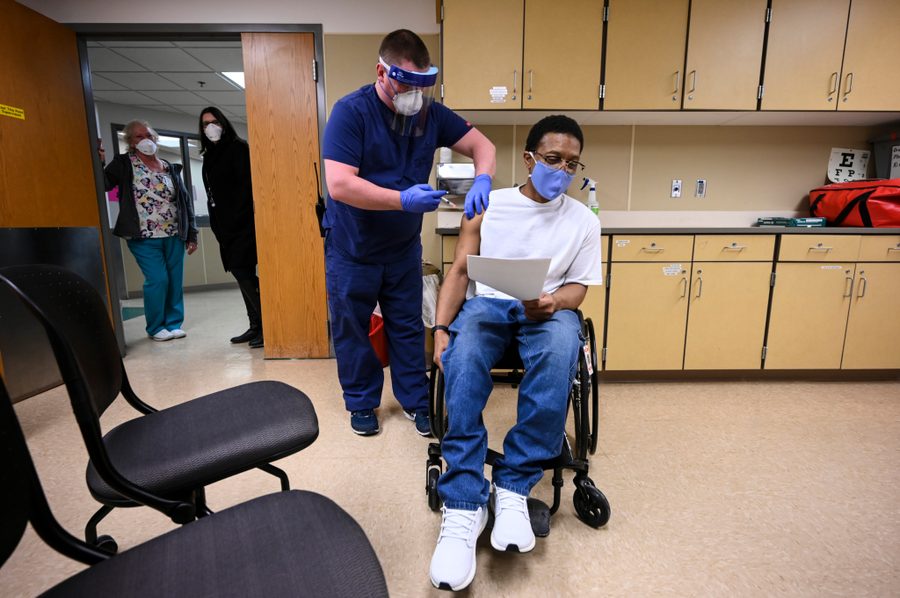
Ed Cramer is 63 years old and has been incarcerated at Stanley Correctional Institution outside of Eau Claire, Wisconsin, since late 2014. For the last 16 months, Cramer has been sharing a cell with a mate from whom he thinks he contracted Covid-19 last March. The first nose-swab test conducted by staff determined that his cellmate had the virus, but Cramer did not. A subsequent test said that Cramer had the virus, but his cellmate did not.
“Your cellmate would prove positive and you’d show negative,” says Cramer. “Then, a week later, when they re-swab-tested us, the tables were turned: Now your celly had it and you don’t.”
And so the pandemic unfolded, with Cramer and his cellmate, both housed in a cell meant for only one person. That dangerous dance should have ended this March, when the Wisconsin Department of Health Services designated incarcerated people as eligible for vaccination. Cramer, however, did not receive his first dose until late April.
Cramer’s case illustrates what people incarcerated in Wisconsin have had to endure throughout the ongoing Covid-19 pandemic. Calls by the incarcerated and their advocates for the early release of inmates, as has happened across the country, have gone unheeded. Many have been holding out hope for the rapid rollout of vaccines — yet that hasn’t been forthcoming either.
Wisconsin is home to 37 state prisons, where 20,000 people are incarcerated. According to the Wisconsin Department of Corrections, more than half of the people incarcerated in the state have contracted Covid-19. Most of those cases were first reported during the last three months of 2020, with a spike of almost 9,000 new positive tests. Roni Schultz, who is 51 years old, identifies as transgender, and has been incarcerated at Oshkosh Correctional Institution near Green Bay since 2018, was one of those cases.
“On October 2, 2020, I tested positive for Covid-19,” says Schultz. “Another inmate on my unit contracted it from a staff member at his job assignment. He knew he had symptoms, but he didn’t want to reveal them because, early on, the administration was punishing inmates who contracted the virus by sending them to segregation for two to three weeks. Before long, a couple more inmates on my unit became sick. They were tested and came back positive for Covid-19. The administration came in and locked down the unit, and the National Guard came in and tested everyone. Half the unit tested positive for the virus, and unfortunately I was in that first wave.”
Since March 2020, in anticipation of such a wave, advocacy groups like the American Civil Liberties Union of Wisconsin and the Incarcerated Workers Organizing Committee of Milwaukee have been calling on Gov. Tony Evers to use his executive powers to release incarcerated people at high-risk from Covid-19. They stressed the dual benefits of early release: allowing those freed to be out of harm’s way, while providing those still incarcerated with the ability to socially distance. Yet, according to DOC records, there were 557 fewer releases from WI prisons in 2020 than in 2019.
The Wisconsin Department of Health Services, which is managing vaccinations statewide, initially included incarcerated people in the second tier of vaccine eligibility that began March 1. State senators attempted to push them further back in the queue with Senate Bill 8, directing DHS “not to prioritize an incarcerated person for vaccination,” but the agency opened eligibility to all state residents age 16 and older on April 5, before the legislation could make it through the state assembly.
But, according to Ron Schroeder, an organizer with the Incarcerated Workers Organizing Committee of Milwaukee, people in prison were effectively deprioritized anyway. “Wisconsin utilized a tiered distribution system — aged, infirm, diabetics, etc., first — for all its citizens, but DOC seems to have excluded incarcerated people from this system,” says Schroeder. “I’ve heard that DOC has only recently begun administering the Covid-19 vaccine.”
Even with vaccines now being administered, the DOC has a long way to go. According to the DOC, as of mid-May less than 35 percent of incarcerated people have been fully vaccinated — with 41% of eligible Wisconsin residents fully vaccinated outside of prison walls, according to DHS. Another 5,000 people behind bars are on their first of either two-shot vaccine.
“That is an improvement after an unacceptably slow start,” says Timothy Muth, a staff attorney with the ACLU of Wisconsin. “The Department of Health Services in Wisconsin initially did the right thing by elevating incarcerated persons on the eligibility list for vaccines in the state because of the high risk of contracting Covid-19 faced by people held in confined living spaces, like prisons. But then DHS failed to provide to prisons the vaccine supplies needed when they became eligible. Only recently has the DOC had the vaccine supply and started to catch up to where it should have been a month or more ago.”
John Beard, Communications Director at the Wisconsin Department of Corrections, confirms that vaccines are being provided by the Wisconsin Department of Health Services to DOC, with the latter administering the shots, but claims that the vaccination figures show there was no delay. He also explains that, while vaccination is not mandatory, the agency is attempting to convince incarcerated people to voluntarily sign up.
“DOC has, and continues to communicate with persons in our care and provide information about the safety and effectiveness of vaccination,” says Beard. “It is not a now-or-never proposal. Just because someone initially hesitates to get vaccinated does not mean they cannot agree to be vaccinated at a later time.”
Some people incarcerated in Wisconsin say the vaccination process is not so straightforward. Out of the four incarcerated people contacted by In These Times for this article, one reported being fully vaccinated, two reported receiving one of two shots, and the last, Aaron Pavin, incarcerated at Columbia Correctional Institution, on the edge of the Wisconsin Dells, reported receiving none — despite signing up months ago. The DOC disputes any delay.
“I have yet to receive a vaccine, [even though] I was officially signed up for it back in February,” says Pavin. “After writing the Health Services Unit, I have received no response after a week of asking. Health Services appointments are scheduled only to be missed, due to staff not doing escorts — not because they can’t, but because they don’t want to. Several inmates have had to harm themselves just to be seen by Health Services staff.”
Arvind Dilawar is an independent journalist whose work has appeared in Newsweek and Vice.
